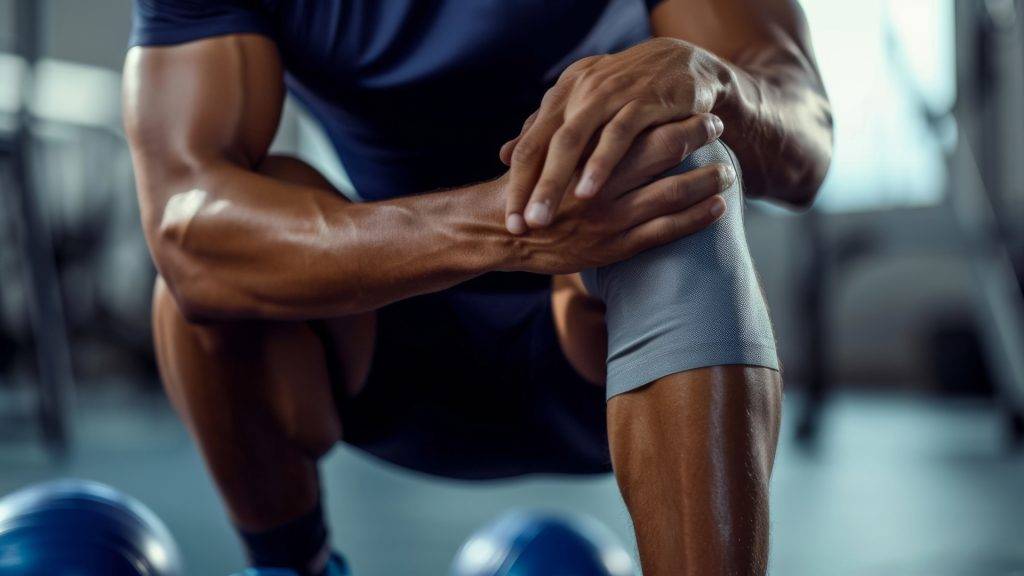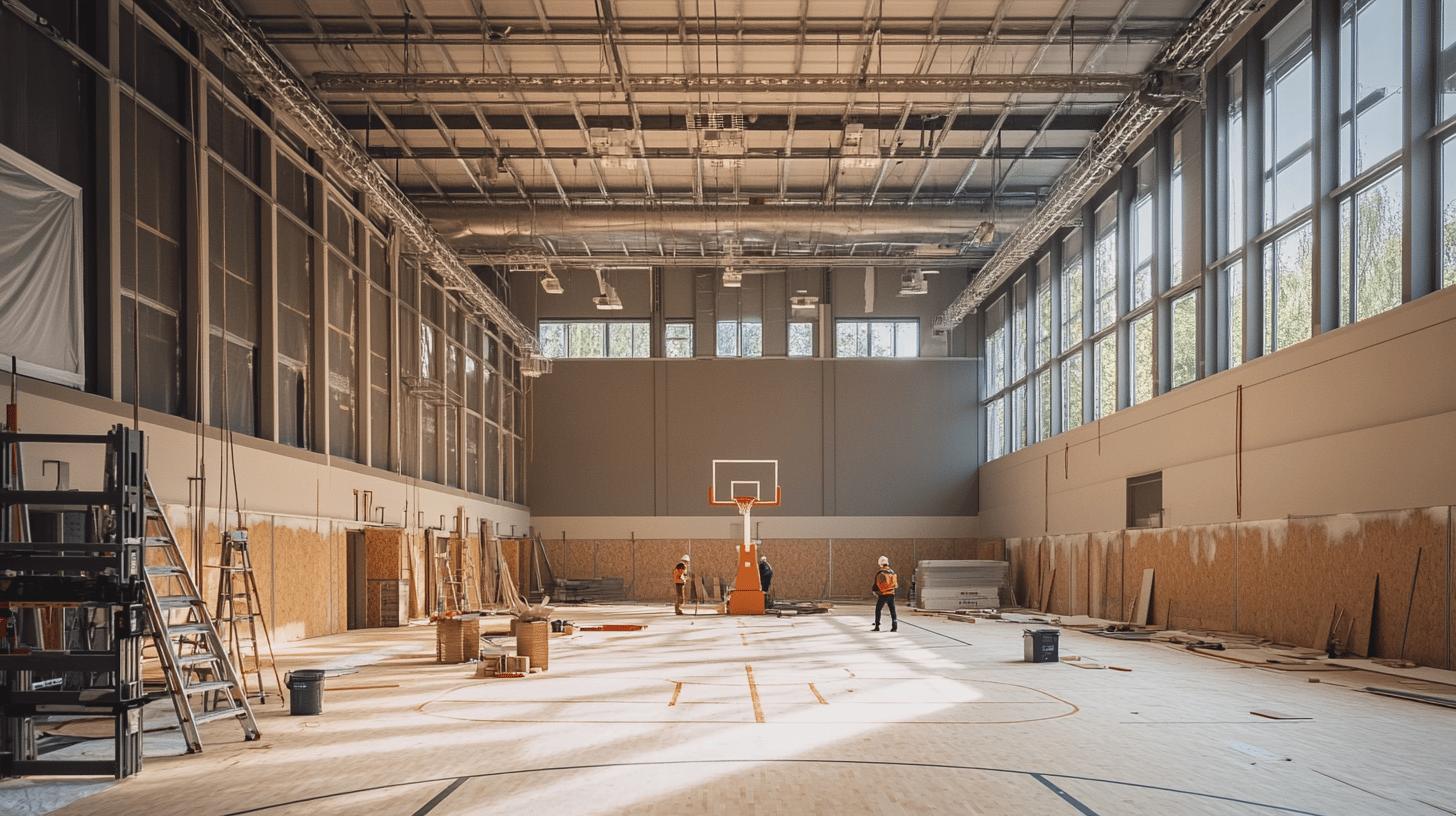Imagine a world where athletes risk injury every time they step onto the field, all due to overlooked safety protocols. Alarming, isn’t it? This isn’t fiction—it’s a stark reality in sports facilities lacking rigorous health and safety testing. Such negligence can lead to serious injuries, legal headaches, and significant financial setbacks. In this article, we’ll explore why regular health and safety assessments are indispensable for creating a secure environment for athletes and staff. It’s time to prioritise safety standards and shield everyone from unnecessary harm.
Why Health and Safety Testing is Crucial in Sports Facilities
Health and safety testing in sports facilities is essential for maintaining a secure environment for athletes and staff. Regular inspections and assessments help identify potential hazards, such as faulty equipment or unsafe playing surfaces before they cause injury. By proactively addressing these issues, facilities can prevent accidents and ensure that all participants feel safe and protected. This ongoing vigilance is crucial for fostering an environment where athletes can perform at their best without fear of injury.
| Hazards Identified | Description |
|---|---|
| Faulty Equipment | Equipment that is damaged or not up to standard can cause injuries. |
| Unsafe Playing Surfaces | Uneven or slippery surfaces increase the risk of falls and injuries. |
| Inadequate Lighting | Poor lighting can lead to accidents and hinder performance. |
| Structural Issues | Weak or damaged structures pose a significant safety risk. |
| Poor Air Quality | Inadequate ventilation can affect athletes’ health and performance. |
Neglecting health and safety testing can have severe consequences. Facilities that fail to conduct regular testing are more likely to experience serious injuries, resulting in legal liabilities and financial losses. These incidents can tarnish the facility’s reputation, making it less attractive to athletes and organisations looking for a safe venue.
Moreover, the financial implications of neglecting health and safety testing are substantial. Costs associated with medical expenses, legal fees, and potential lawsuits can be overwhelming. By investing in regular health and safety assessments, facilities can mitigate these risks, ensuring a safer environment and protecting themselves from significant financial setbacks.
Common Health and Safety Tests in Sports Facilities
Health and safety testing in sports facilities encompasses a variety of checks to ensure that the environment remains safe for athletes, staff, and spectators. Common tests include equipment inspections, structural integrity checks, and air quality assessments. These evaluations are vital for identifying potential hazards and maintaining compliance with health regulations.
Equipment Inspections
Equipment inspections are essential for preventing injuries caused by faulty gear. Regular checks help ensure that all sports equipment is in proper working condition and meets safety standards. During inspections, the following items are typically examined:
- Condition of protective gear (e.g., helmets, pads)
- Integrity of nets and goals
- Functionality of fitness machines
- Safety of playing equipment (e.g., balls, rackets)
Structural Integrity Checks
Structural integrity checks involve assessing the physical condition of the sports facility to ensure it can safely accommodate athletes and spectators. These checks are crucial as they help identify any weaknesses or damage that could pose a safety risk. Structural integrity assessments typically include evaluating the stability of seating areas, inspecting the condition of walls and ceilings, and ensuring that exit routes are clear and accessible.
Air Quality Assessments
Air quality assessments are particularly important for indoor sports facilities. Poor air quality can negatively impact athletes’ health and performance. These assessments often involve measuring levels of pollutants, such as carbon dioxide and particulate matter, and ensuring that ventilation systems are functioning effectively. Maintaining good air quality helps create a healthier environment for everyone using the facility.
Benefits of Regular Health and Safety Testing

Regular health and safety testing in sports facilities offers numerous advantages, primarily by reducing the risk of injury, improving athlete performance, and enhancing the reputation of the venue. Frequent inspections and assessments help identify potential hazards early, allowing for timely interventions that prevent accidents and injuries. This proactive approach not only ensures a safer environment for athletes but also boosts their confidence, enabling them to perform better. Furthermore, a well-maintained and safe facility is more attractive to athletes and organisations, enhancing its reputation and increasing its usage.
- Reduced risk of injury
- Improved athlete performance
- Enhanced reputation of the facility
Compliance with safety regulations is another critical benefit of regular health and safety testing. Adhering to local and national standards ensures that sports facilities remain safe for athletes, staff, and spectators. Regular testing and maintenance also help facilities avoid legal liabilities and potential fines associated with non-compliance. By consistently meeting regulatory requirements, sports facilities can maintain a safe environment, fostering trust and reliability among users.
Regulatory Requirements for Health and Safety in Sports Facilities
Regulatory requirements for health and safety in sports facilities are crucial for ensuring a secure environment for athletes, staff, and spectators. These regulations mandate regular checks and assessments to maintain compliance with local and national standards, ultimately aiming to reduce accidents and enhance user satisfaction.
Specific regulatory requirements can vary depending on the location and type of sports facility, but common mandates include routine inspections of equipment, structural integrity checks, and air quality assessments. Compliance audits are often conducted to ensure that facilities adhere to these standards. For example, the Health and Safety Executive (HSE) in the UK outlines clear guidelines that sports facilities must follow, including risk assessments and maintaining records of safety checks. Facilities with rigorous testing protocols generally report fewer accidents and higher user satisfaction, showcasing the effectiveness of these regulations.
The benefits of adhering to regulatory requirements are substantial. Compliance ensures that sports facilities provide a safe environment, reducing the risk of injuries and potential legal liabilities. Additionally, facilities that meet these standards often experience increased trust from users and a better overall reputation. By consistently following health and safety standards, sports venues can foster a safer and more reliable environment for everyone involved.
| Regulation | Purpose |
|---|---|
| Health and Safety at Work Act 1974 (UK) | Ensures the safety of employees and public by mandating risk assessments and safety protocols. |
| Control of Substances Hazardous to Health Regulations 2002 (UK) | Protects against health risks associated with hazardous substances, ensuring safe air quality. |
| Building Regulations 2010 (UK) | Ensures the structural integrity of sports facilities, including safe access and egress routes. |
| Management of Health and Safety at Work Regulations 1999 (UK) | Requires employers to assess and manage risks to health and safety in the workplace. |
Case Studies: Positive Impacts of Rigorous Health and Safety Testing
Examining case studies is crucial for understanding the tangible benefits of rigorous health and safety testing in sports facilities. These real-world examples provide valuable insights into how comprehensive testing protocols can significantly reduce accidents and enhance user satisfaction. By analysing specific instances across various sports, we can see how implementing stringent safety procedures can lead to safer environments for athletes, staff, and spectators.
Football
In football, stringent health and safety protocols have been instrumental in reducing injuries and fatalities. For instance, following a series of high-profile accidents, many football clubs implemented rigorous testing and maintenance schedules. These measures included regular inspections of playing surfaces, equipment checks, and emergency readiness drills. The result was a notable decrease in injury rates and an overall safer environment for players and fans alike.
Tennis
Tennis facilities have also seen significant improvements through rigorous health and safety testing. One prominent example is the implementation of regular air quality assessments and equipment inspections at major tennis venues. These measures have not only improved player performance by ensuring good air quality but also reduced the risk of injuries from faulty equipment. The success of these protocols has set a precedent for other sports facilities to follow.
- Football:
- Significant reduction in injury rates
- Improved emergency readiness
- Enhanced player and spectator safety
- Tennis:
- Better air quality leading to improved performance
- Reduced risk of equipment-related injuries
- Benchmark for other sports facilities
- Drastic reduction in serious accidents
- Life-saving safety protocols
- Enhanced sport’s safety reputation
The Role of Facility Managers in Health and Safety Testing
Facility managers are pivotal in ensuring that health and safety testing is conducted regularly within sports facilities. Their responsibilities encompass a wide range of activities aimed at maintaining a safe environment for athletes, staff, and spectators. One of their primary duties is to conduct regular safety audits and maintenance checks. These audits help identify potential hazards and ensure that all equipment and structural elements of the facility are in proper working condition. Additionally, facility managers must stay updated with the latest regulatory requirements and ensure that their sports facility complies with all health and safety standards. This proactive approach not only helps in preventing accidents but also fosters a culture of safety within the facility.
- Scheduling and conducting regular safety audits
- Inspecting and maintaining sports equipment
- Ensuring structural integrity of the facility
- Implementing emergency preparedness plans
Training staff on safety protocols is another critical responsibility of facility managers. By ensuring that all personnel are well-versed in safety procedures, facility managers can significantly reduce the risk of accidents and injuries. Effective training programs should cover a wide range of topics, including the correct use of equipment, emergency response actions, and the importance of maintaining a clean and hazard-free environment. Continuous education and refresher courses ensure that staff members remain competent and confident in their ability to manage safety-related issues, thereby contributing to a safer sports facility for everyone involved.
How Courtship Flooring Ensures Health and Safety in Sports Facilities
Courtship Flooring boasts over 30 years of expertise in sports floor installations, refurbishments, and maintenance across the UK and internationally. Their extensive experience enables them to deliver high-quality flooring solutions that meet the specific needs of various sports facilities. By leveraging their deep knowledge and skillset, Courtship Flooring ensures that every installation is performed to the highest standards, providing safe and durable surfaces for athletes and staff.
Courtship Flooring’s key services include full sports floor installations, floor refurbishments, and regular maintenance. These services are designed to address the unique requirements of different sports and usage patterns. Their installation processes are meticulous, ensuring that every aspect of the flooring system is optimised for performance and safety. Refurbishments and maintenance services are equally comprehensive, focusing on extending the lifespan of sports floors and maintaining their safety features.
Courtship Flooring also offers comprehensive health and safety testing services, which are essential for meeting regulatory standards and enhancing the safety of sports facilities. Their testing procedures are thorough and designed to identify potential hazards before they become issues. By conducting regular assessments, Courtship Flooring ensures that sports facilities remain compliant with health and safety regulations, providing a secure environment for athletes and staff alike.
- Surface friction testing
- Shock absorption measurement
- Indoor air quality assessments
- Structural integrity evaluations
- Compliance audits and certifications
Final Words
In the action, health and safety testing is essential for providing a safe environment in sports facilities. Regular testing identifies potential hazards and mitigates risks, preventing injuries and legal challenges.
Courtship Flooring, with over 30 years of experience, ensures these standards are met through comprehensive testing and maintenance services.
Emphasising The Importance of Health and Safety Testing in Sports Facilities safeguards athletes’ well-being and enhances the reputation of sports centres. Prioritising this critical aspect leads to a safer and more successful sporting environment.
FAQ
What is the importance of health and safety in sports?
A: Ensuring health and safety in sports is crucial for preventing injuries, ensuring athlete and staff wellbeing, and avoiding legal liabilities and financial losses.
What are health and safety examples in sports?
A: Examples include regular equipment inspections, proper training for safe exercise techniques, maintaining clean facilities, and conducting risk assessments.
Why is health screening important in sports?
A: Health screenings help identify potential health issues, enabling athletes to participate safely and ensuring they do not exacerbate existing conditions.
Why is health and safety important in PE (Physical Education)?
A: Health and safety in PE is vital to protect students from injuries, promote lifelong fitness habits, and ensure a safe learning environment.
Why is health and safety important for a sports coach?
A: Sports coaches must ensure a safe environment, reducing the risk of injury for athletes and enhancing their performance through proper safety protocols.
Why is health and safety important in fitness?
A: Health and safety measures in fitness prevent injuries, ensure the well-being of gym-goers, and maintain compliance with regulations.
What are the safety practices in sports and exercise?
A: Safety practices include using proper equipment, warming up before activities, understanding exercise techniques, and following facility safety protocols.
What are the safety rules in sports?
A: Safety rules in sports often involve using correct protective gear, following sport-specific guidelines, doing regular equipment checks, and ensuring playing surfaces are safe.
Why is health and safety testing in sports facilities important?
A: Health and safety testing identifies potential hazards like faulty equipment or unsafe surfaces, preventing injuries and ensuring compliance with regulations.
What are the benefits of regular health and safety testing in sports facilities?
A: Benefits include reducing injury risks, ensuring compliance with safety regulations, enhancing athlete performance, and building a positive reputation for the facility.
What are some common health and safety tests in sports facilities?
A: Common tests include equipment inspections, structural integrity checks, air quality assessments, and compliance checks with health regulations.
What are the key roles of facility managers in health and safety testing?
A: Facility managers ensure regular safety audits, maintain sports facilities, train staff on safety protocols, and address any identified hazards promptly.


